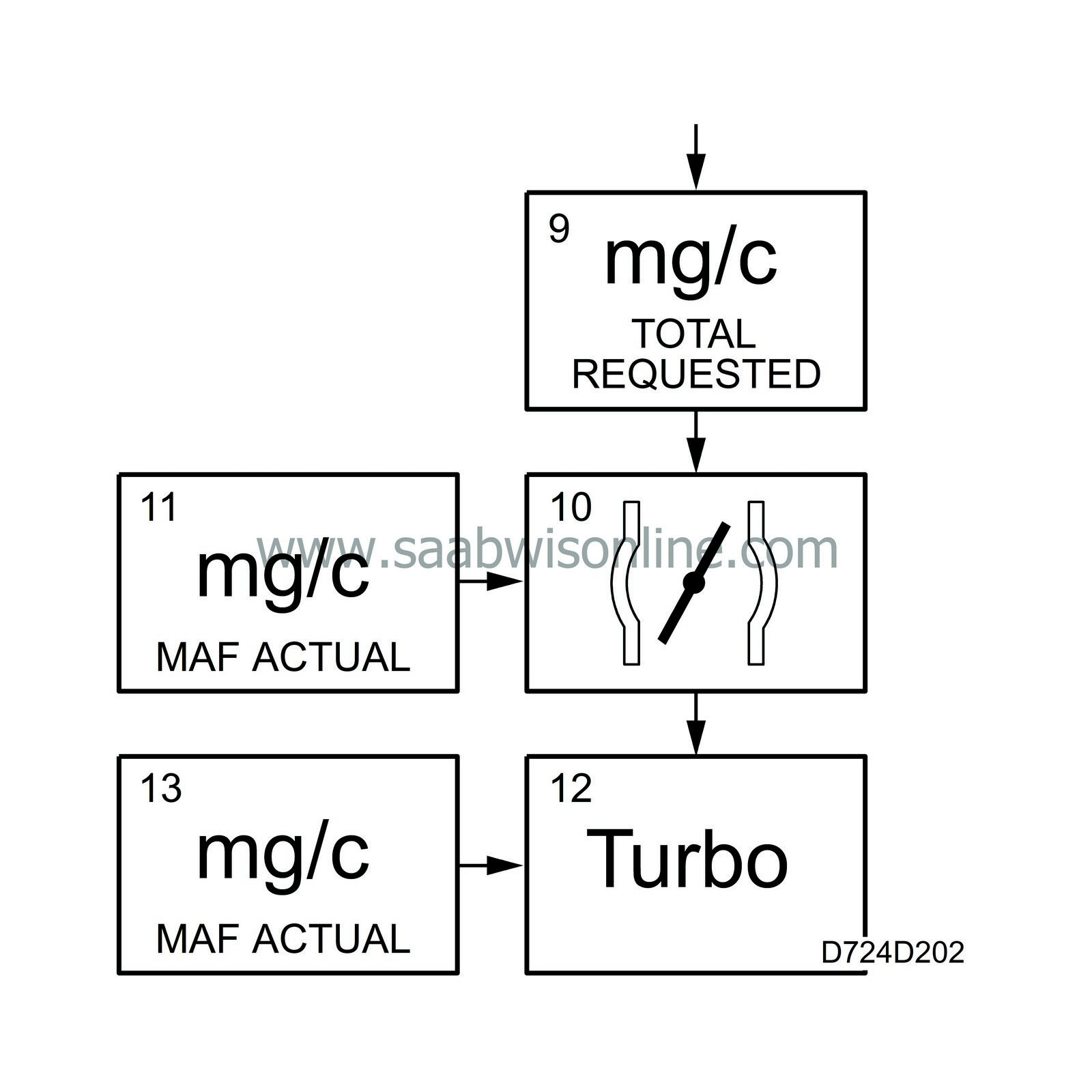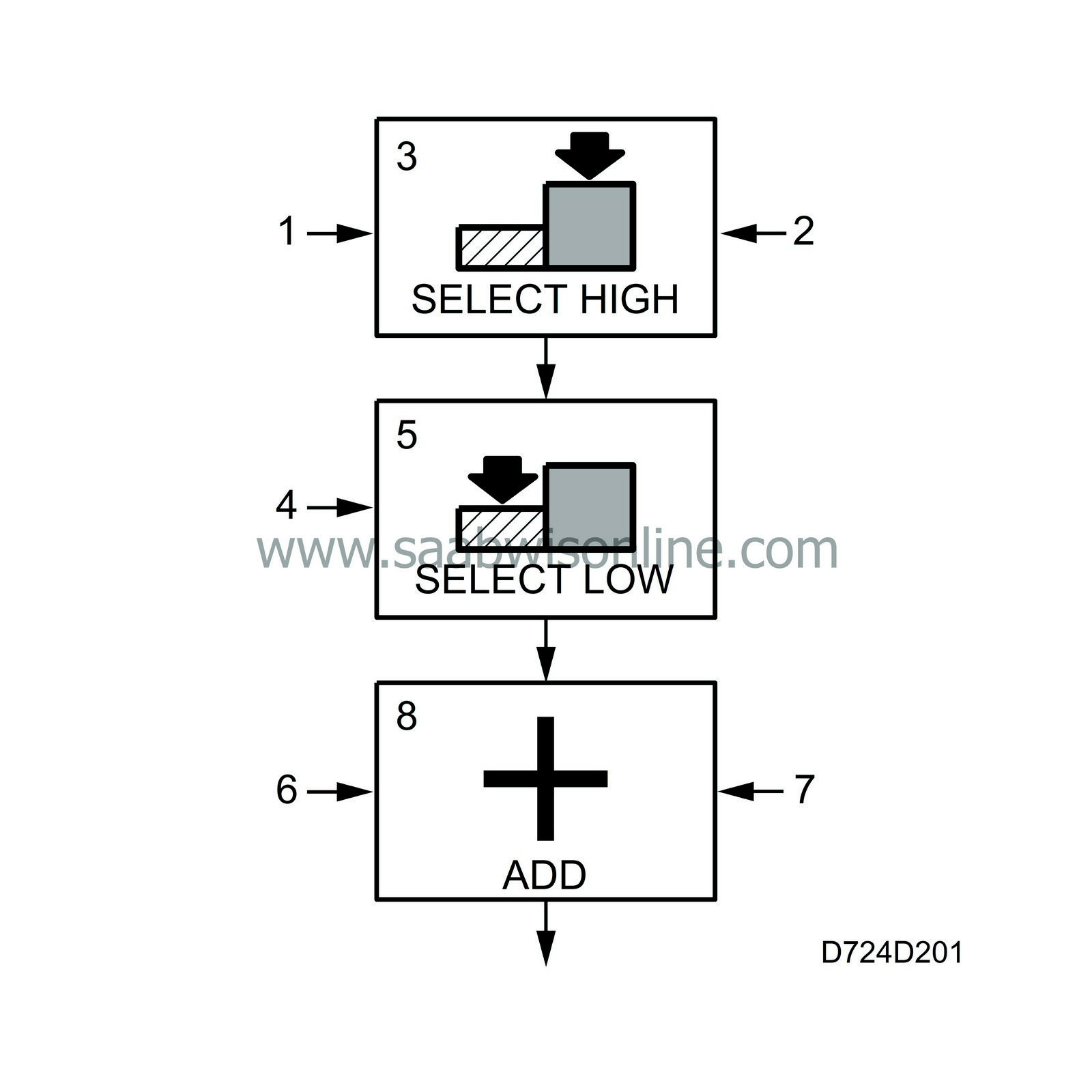Air mass control, basic function
| Air mass control, basic function |
| 1. |
Driver request
The control module reads pedal potentiometer 1 and converts the voltage to air mass/combustion (mg/c). The value is sent to box 3. |
|
| 2. |
Cruise control request
When cruise control is active, the air mass/combustion required to maintain the set speed is calculated. The value is sent to box 3. |
|
| 3. |
Select highest value
The control module selects the highest of the two values. The value is sent to box 5. |
|
| 4. |
Engine torque limitation
Maximum permissible air mass/combustion varies depending on the engine variant. During operation, the maximum permissible air mass/combustion must also be limited to protect the engine, gearbox, brakes or turbo. External units, such as the automatic transmission, can also limit the maximum permissible air mass/combustion. Limitation can also take place in case of a system fault. The control module selects the lowest value. The value is sent to box 5. |
|
| 5. |
Select lowest value
The control module selects the lowest value and sends it to box 8. |
|
| 6. |
Compensation request
When the A/C compressor is on, and when the electrically heated rear window or radiator fan is on, the air mass/combustion required to compensate for the increased load is calculated. The value is sent to box 8. |
|
| 7. |
Other air request
The control module calculates the air mass/combustion required for idle speed control. The value is sent to box 8. |
|
| 8. |
Totalling values
The control module total all the values. The total is sent to box 9. |
|
| 9. |
Total system air request

This value is the total system air request. The value is sent to box 10. |
|
| 10. |
Throttle control
The requested air mass/combustion is converted to requested voltage for throttle position sensor 1. The charge air pressure and intake air temperature are used to correct this conversion. The throttle motor rotates the throttle until the current voltage for throttle position sensor 1 corresponds with the requested voltage.
|
|||||||
| 11. |
Current air mass/combustion
The requested air mass/combustion is also compared with the current air mass/combustion (current MAF value/combustion). If necessary, the requested voltage for throttle sensor 1 is finely adjusted. |
|
| 12. |
Turbo control
If the requested air mass/combustion is too high to be handled by the throttle control alone, the turbo control will take over. The excess is converted to a PWM, which controls the charge air control valve. The absolute atmospheric pressure is used to correct this conversion. |
|
| 13. |
Current air mass/combustion
The requested air mass/combustion is compared with the current air mass/combustion and the charge air control valve PWM is finely adjusted if necessary. |
|
| Diagnostics |
In principle, the air mass/combustion is the same as engine torque. Air mass control is therefore of great interest when diagnosing bad performance.
There is a special menu in the diagnostic tool from which values of interest can be read. The most important is the deviation between requested and current air mass/combustion.
The current value should always, sometimes after a short interruption, follow the requested value. If this is not the case a fault in the turbo function is possible.
| Note | ||
|
A fault in the throttle control can be eliminated because deviations between the present throttle position value and its desired value place the throttle control in limp-home. |



